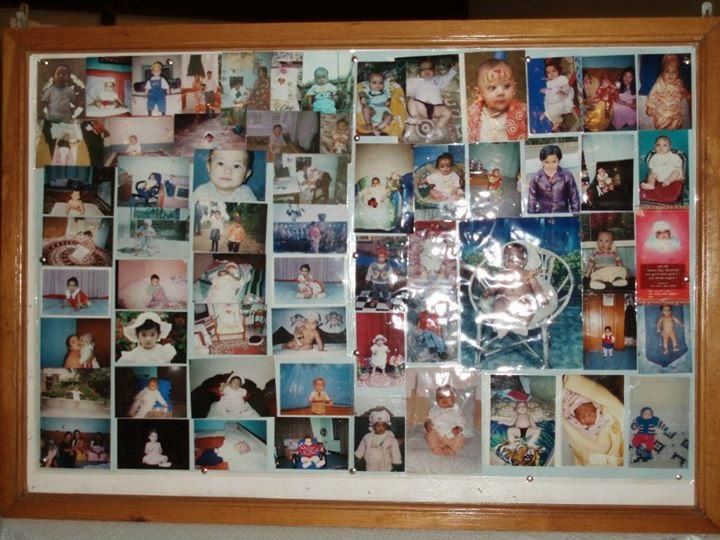Thursday, January 26, 2012
Case of Unidentified Polycystic Ovarian Syndrome complicated in Ovarian Hyper-Stimulation Syndrome (OHSS)

Subject - Ovum donor Age 20, unknown case of Polycystic Ovarian Syndrome (PCOS) on COH (Controlled Ovarian Hyper-stimulation) for Ovum Donationwas put on Down Regulation Long Protocol. On serial ultrasound, she developed more than 15 follicles in each ovary. HCG 10,000 I.U. was given i.m. when follicles reached 18-20 mm. On the day of ovum retrieval, when right ovary was aspirated, most of the content of aspirated follicular fluid contained blood. On microscopic observation, only 2 immature-looking oocytes were obtained. Left ovary aspiration was very difficult because of the thickening of the capsule. With much difficulty, most of the follicle contents were aspirated. However, out of 14-15 follicles puncture, only 1 deformed oocyte was obtained. The donor was put on progesterone injection (i.m). After 5 days of ovum retrieval, she developed signs of Ovarian Hyper-Stimulation Syndrome (OHSS)with pain in the lower abdomen. She was treated by anti-spasmotics and was asked for bed rest. After 2 days, she developed dyspnoea with pain in the lower abdomen. On examination, she was found to be hypotensive with B.P. 80/40 and USG showed huge ascitis on both sides of abdomen and she was admitted in an Intensive Care Unit (ICU). Her electrolytes levels were maintained by intravenous fluid administration. Intravenous albumin (100 ml) was also infused slowly 4 hourly. She was also put on antibiotics, anti-coagulants and daily progesterone injections were continued. She was planned for paracentesis immediately, but due to some unavoidable circumstances, the paracentesis was delayed for 2 days, when she had already developed hydrothorax. Again, intravenous albumin (100 ml) was infused slowly. At this moment, patient developed breathing difficulties and her oxygen saturation was decreasing (<80 mm Hg). Her Chest X-Ray showed bilateral pleural effusion. Patient was about to put on ventilator when paracentesis of both side was done. About 1.5 litres of fluid was drained from both side on 2 occasions. Intravenous albumin (100 ml) infusion was repeated third time. The next day, patient’s vitals were normalized and the patient was discharged from the ICU.
Dr. Uma Shrivastava
Founder Director
Infertility Centre
NUTRITIONAL DISORDERS AND BONE DEFORMITY
nUTRITIONAL DISORDERS AND BONE DEFORMITY
A 33 yrs. Lady R. R. came to our Infertility center with 8 wks of gestation with a hope of delivering a healthy baby this time. According to her history, she had 3 spontaneous abortions and two living children, a boy and a girl.
The boy child has a spinal deformity and his MRI of lumbar regions showed extradural lipoma in lower lumbar and sacral spinal canal with multiple congenital defects.
The baby girl also has scoliosis.
A detailed investigation of the present conception was carried out including Total Blood Count, Random Blood glucose, Routine Urinanalysis, Alpha fetoprotein were normal while TORCH IgG was positive. Under our antenatal care Dydrogesterone was given as luteal support till complete placentation. As anti-TORCH Spiromycin 3mIU daily was provided along with Folic acid and Vitamin tablets till 20 weeks. Later Iron & Calcium were added till delivery. Isoxuprine was provided as emergency treatment for any pain in the abdomen. As prophylaxis part of antenatal care, Tetanus Toxoid injections were given at 21 & 24 weeks.
A healthy baby boy was delivered by Caesarean section. The baby was specially investigated for any bone deformities, no abnormalities were detected. Now the boy is 3.5 years old.
After one year her younger sister Lady R. A. 27 yrs. came for similar treatment. She has a history of 1 spontaneous abortion at 3 .5 months of gestational age.She was provided hormone supplement according to her hormone levels. After 5 months she came to infertility centre with 7 weeks gestation.
She has a baby girl of 4 yrs.with kyphotic bone deformity.
Similar routine investigations were done. She did not have TORCH infection. Thus everything else Blood Count, Random Blood glucose, Routine Urinanalysis & Alpha fetoprotein tested & were found normal. Dydrogesterone was given as luteal support till complete placentation. Folic acid and Vitamin tablets were added from the first trimester, later Iron & Calcium were added till delivery. Isoxuprine was provided as emergency treatment for any pain in the abdomen. As prophylaxis part of antenatal care, Tetanus Toxoid injections were given at 21 & 24 weeks.
The younger sister also had a normal delivery with a healthy baby boy who also does not have any bone or joint deformities. Now the boy is 2 years old.
Both the sisters are happy but they have preserved cord blood for any future use.
Introduction of INFERTILITY CENTRE Nepal
WELCOME TO INFERTILITY CENTRE !
The Infertility Center was established in 1992 as a Reproductive Health Care Center (RHCC) but later specialized as an Infertility care and Hormone research center. The major objective of the center is to provide complete infertility investigation and treatment to infertile couples.
By now it has provided service to about twelve thousand infertile couples of which more than four thousand have been blessed with children.
Subscribe to:
Posts
(
Atom
)















